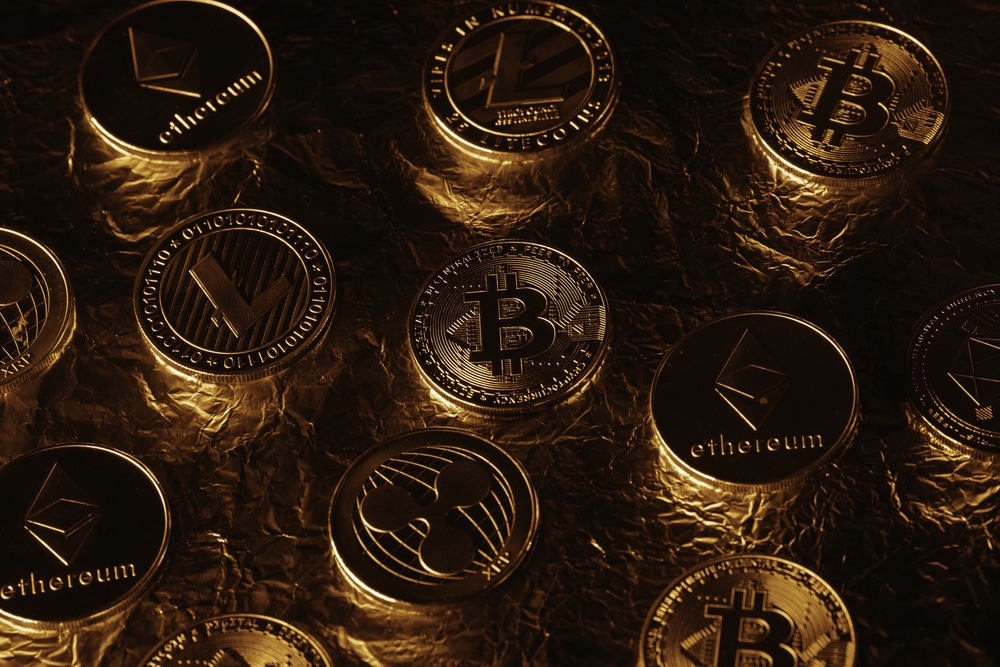
There were only a few cryptocurrencies back then, and their main purpose was to provide a cheap and quick alternative to the US dollar for cross-border payments. There are currently around 18000 cryptocurrencies with various uses.
Bitcoin is regarded as the first cryptocurrency, and other cryptocurrencies are referred to as “altcoins” (a combo word derived from “alternative coin”). The word altcoins refer to cryptocurrencies other than Bitcoin that are seen as alternatives to Bitcoin. They are then classified into types based on their uses and features. Although these categories are broad, it’s worth noting that several of the cryptos featured in them can be classified into multiple categories.
Utility cryptocurrencies
Utility tokens are digital tokens that provide token holders particular rights and are created on a specific blockchain environment – frequently based on Ethereum’s ERC-20 standard. A person can get access to a product or service by purchasing a token, which they can either redeem for a defined access value or hold. The holder obtains access to a product or service with a value equal to the token, but not ownership. For example, as long as they have the tokens, they can use the goods or services at a reduced price or for free. Also, keep in mind that they are not investment goods and can lose all of their value at the holder’s expense.
Utility tokens are not mined. They are frequently pre-mined, meaning they are created all at once and dispersed in a manner determined by the project’s team. Examples include Lucky Block, Binance Coin, Chiliz, Basic Attention Token, Brickblock, Sirin Labs Token, and Golem.
Security cryptocurrencies
They are blockchain-based digital forms of traditional securities. These tokens might represent fractional ownership of any valuable object, such as a car, real estate, or shares. Because of the nature of transactions, financial regulators must supervise and regulate their exchange, issuance, deals, value, tokenization, backing, and trading to protect user investments. In this scenario, the rule serves to protect user funds and investments while also holding entrepreneurs accountable. The profit generated by the issuers’ or managers’ activities and decisions is distributed to the owners or holders.
They are issued through Security Token Offering (STOs). Their use cases include situations where investors require immediate settlement, management transparency, asset divisibility, and so on. Examples include Sia Funds, Science Blockchain, and Blockchain Capital.
Asset cryptocurrencies
They are a type of cryptocurrency whose value is guaranteed by a real-world asset. On blockchains, they are utilized to digitally represent and trade value for these underlying assets. Because of the nature of transactions involving the underlying assets, the majority of these are supplied as security tokens. The majority of them are distributed through the Equity Tokens Offer (ETO).
Subdivisions
Precious metal tokens: Such as PAXG and DGX, which are backed by gold.
Company share tokens: They allow tokenizing and exchanging corporate shares on crypto exchanges. The Dao and RRT Token are two examples.
Commodity tokens: They represent the value of commodities and enable the tokenization and trading of commodities like oil, natural gas, renewable energy, wheat, and sugar. Examples Wheat Token Coin, Petroleum Coin, Ziyen Inc Oil token.
Transactional cryptocurrencies
These tokens are primarily used for transactions. You could, for example, use them to pay for products and services, pay bills, and cash out digital currencies into local fiat currencies like the dollar.
An increasing number of businesses across a wide range of industries, from big tech to airlines, are adopting cryptocurrencies and allowing customers to pay for their goods and services with them.
As businesses and financial institutions (FIs) look for methods to stay competitive, interest in innovative payment technologies such as cryptocurrency is growing. Most of the cryptos, whether security or utility, fall under this category. Examples include Dogecoin, Tether, Bitcoin, and Monero.
Exchange cryptos
They are digital tokens issued by crypto exchanges. Exchange tokens are primarily used to raise funds for the platform. As a result, the exchange can better maintain and improve its infrastructure. They are used to pay for transactions, listing, withdrawal, and deposit fees.
They can also be used as a base market. They can be paired up with other cryptocurrencies to create liquidity pools. This allows holders to trade their exchange tokens for other cryptocurrencies without the danger of price slippage or unexpected price swings.
These tokens can be purchased straight from the exchange. Most exchanges also issue these tokens as part of their Initial Exchange Offering (IEO) when they first launch. Exchanges may also offer these tokens as part of an airdrop, which is a free gift designed to assist the platform in promoting its coin. Examples include Binance Coin, Sushi, Gemini USD, CRO, FTX Coin, OKB, and KuCoin.
Stable cryptos
These are tokens of stable value in the sense that their price is fairly predictable, nearly constant. They are backed by a monetary asset that has a relatively consistent value. For example, there are stable coins backed by the dollar and the euro, gold and other precious metals, oil, and commodity-backed tokens.
They are backed by a specific ratio, and the asset that backs them must be retained in reserves in accordance with that ratio. There are fiat-backed stablecoins, crypto-backed stablecoins, commodity-backed stablecoins, and algorithmic stablecoins, which use software and regulations to maintain a stable peg with money or another asset. Stable tokens assist the world in eliminating asset or digital currency volatility. Stablecoins include Tether (USDT), True USD (TUSD), Paxos Standard (PAX), USD Coin (USDC), and Binance USD (BUSD).
Summary
In general, cryptocurrencies can be classified as follows: What is the cryptocurrency’s purpose? What is its value proposition? What is it for? There are many other types of cryptocurrencies, but payment tokens are the most common. Security tokens are the best to invest in based on these criteria, while almost all transactional tokens are suitable for that purpose. Only utility tokens are not regulated, so there is no one to blame if an investment goes poorly.








Leave a Reply